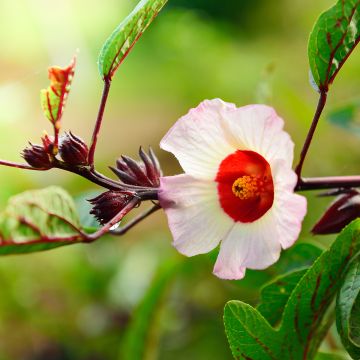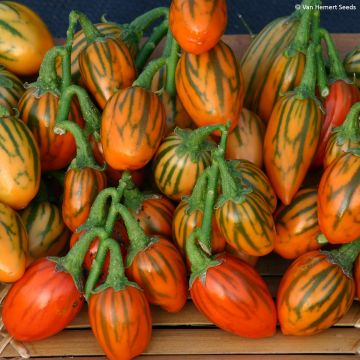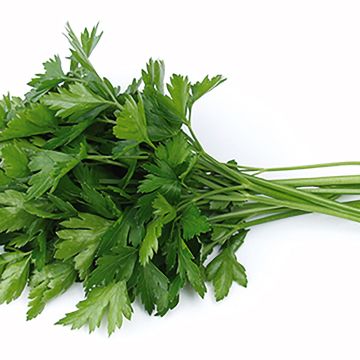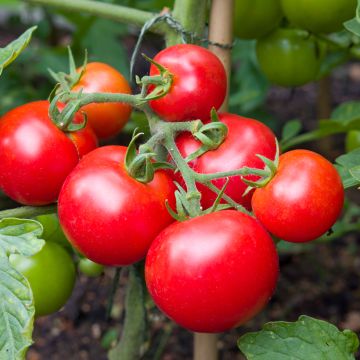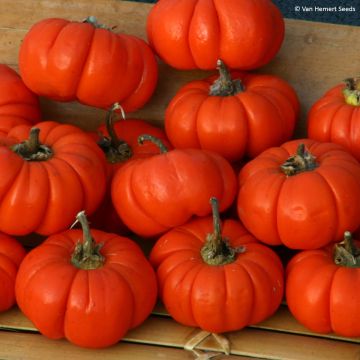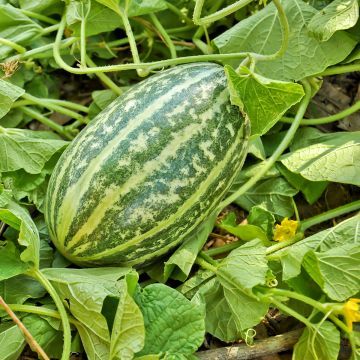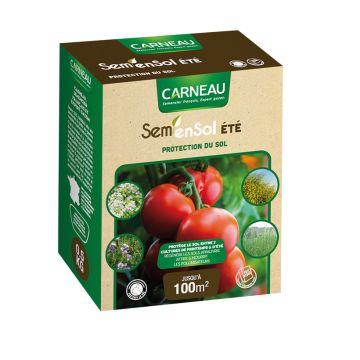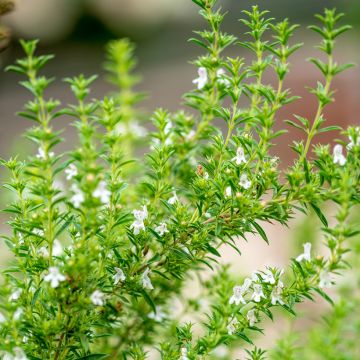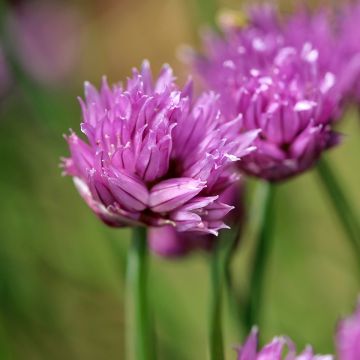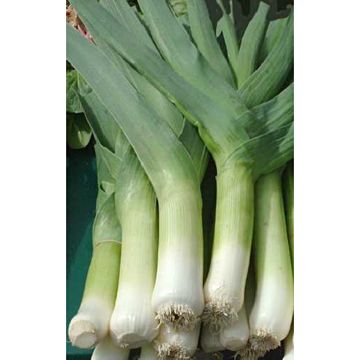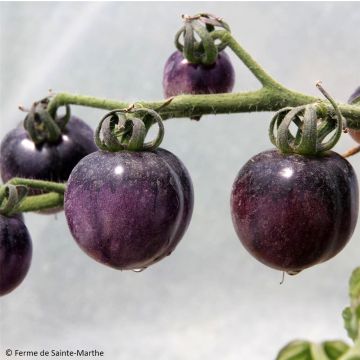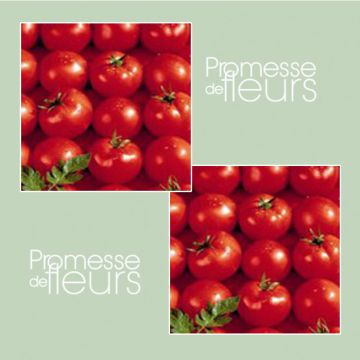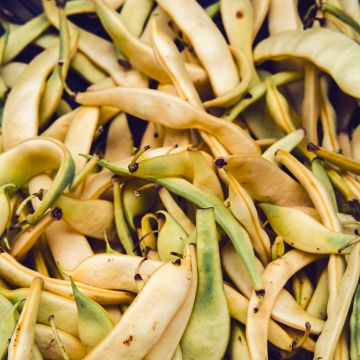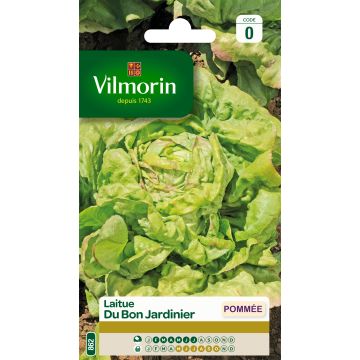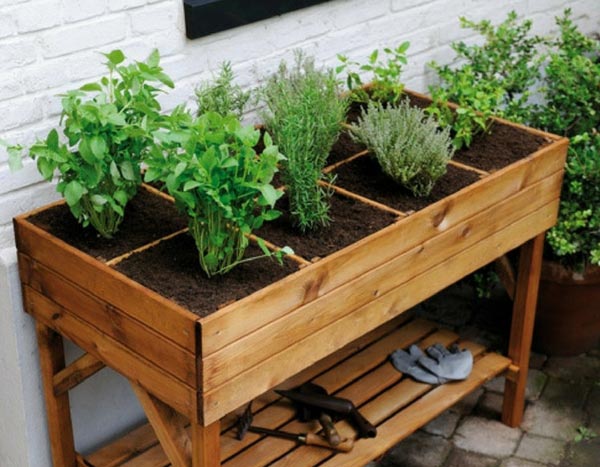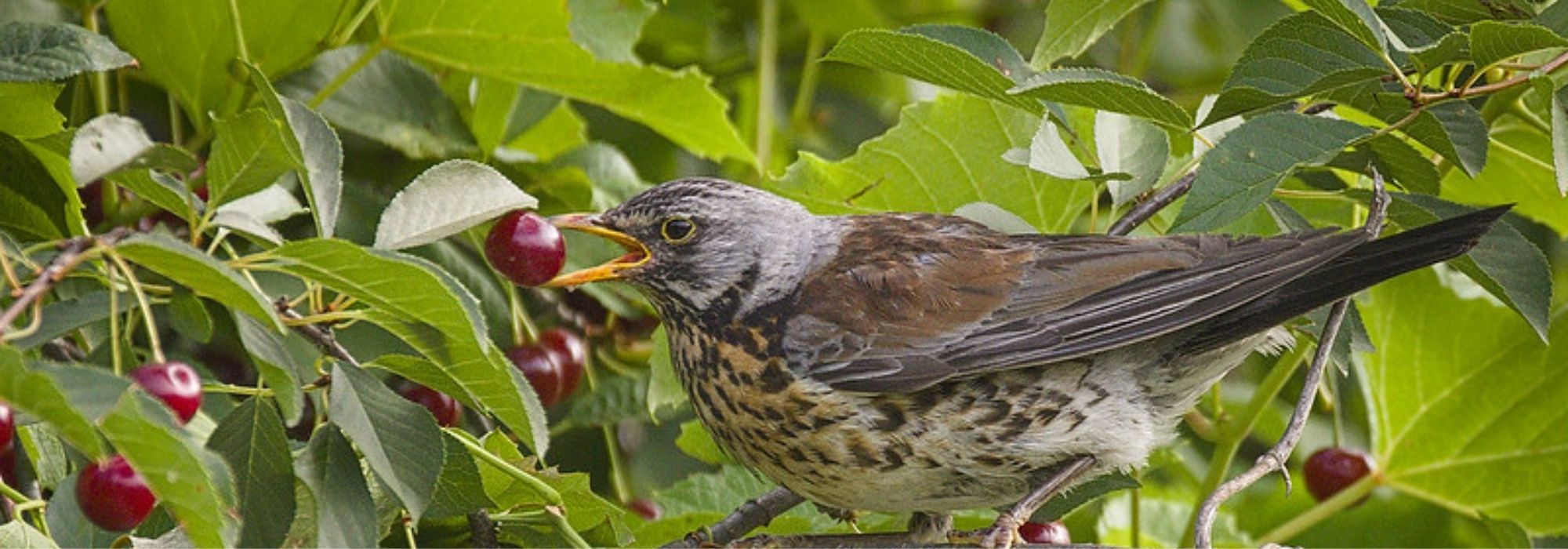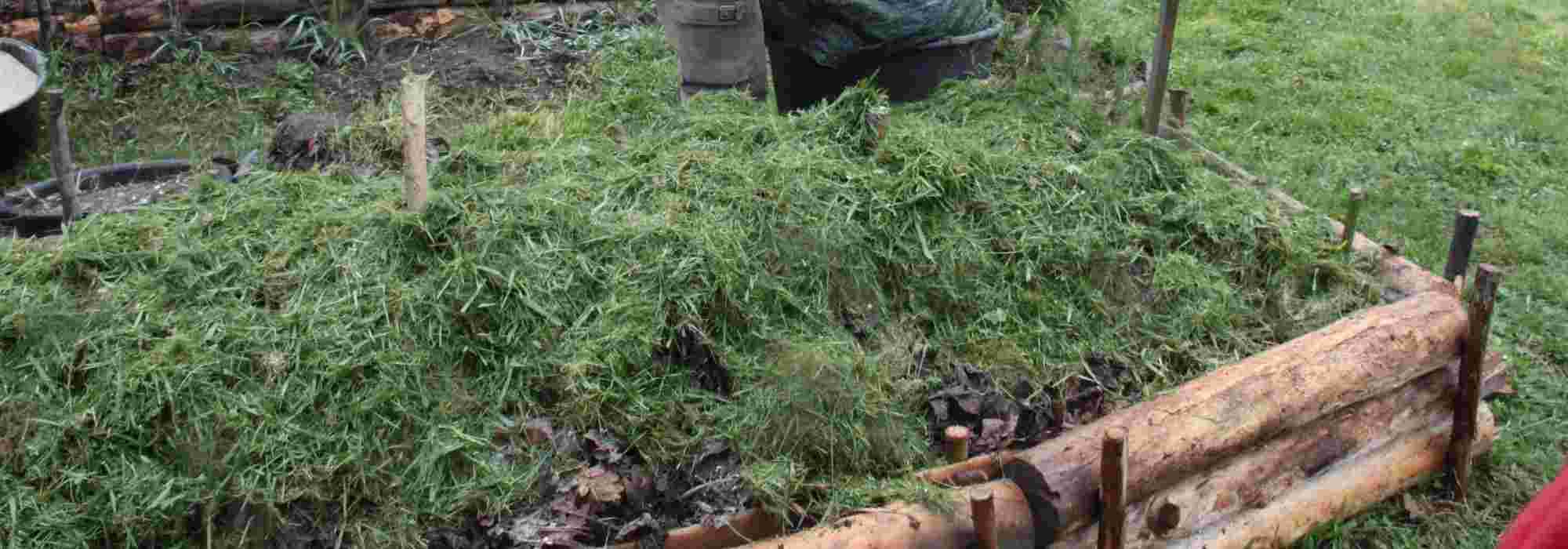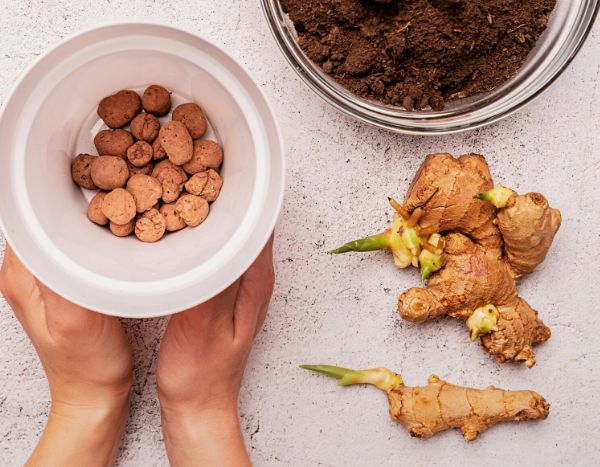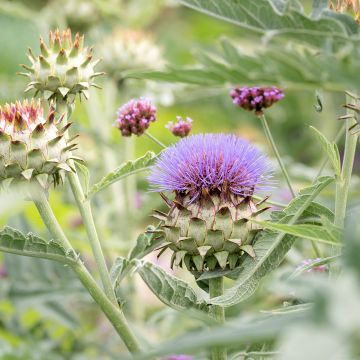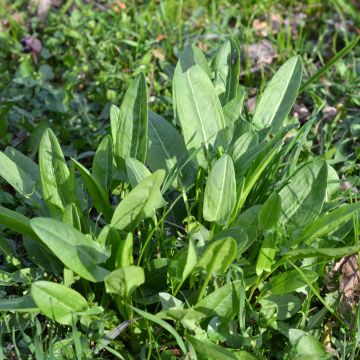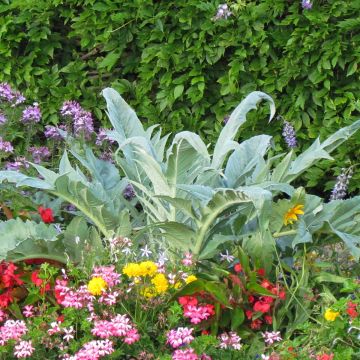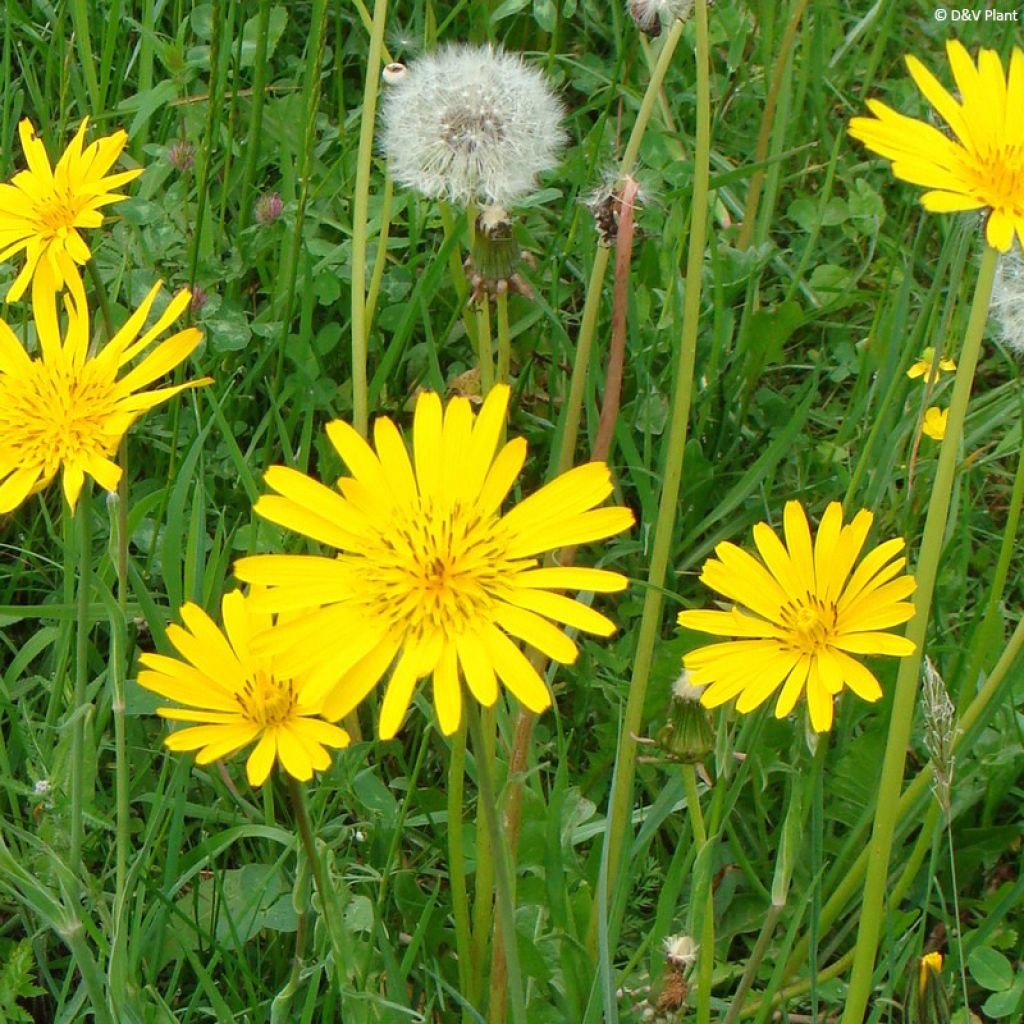

Salsifis des près - Tragopogon pratensis
Meadow Salsify - Tragopogon pratensis
Tragopogon pratensis
Meadow Goat's-beard, Jack-go-to-bed-at-noon, Meadow Salsify
Special offer!
Receive a €20 voucher for any order over €90 (excluding delivery costs, credit notes, and plastic-free options)!
1- Add your favorite plants to your cart.
2- Once you have reached €90, confirm your order (you can even choose the delivery date!).
3- As soon as your order is shipped, you will receive an email containing your voucher code, valid for 3 months (90 days).
Your voucher is unique and can only be used once, for any order with a minimum value of €20, excluding delivery costs.
Can be combined with other current offers, non-divisible and non-refundable.
Why not try an alternative variety in stock?
View all →This plant carries a 6 months recovery warranty
More information
We guarantee the quality of our plants for a full growing cycle, and will replace at our expense any plant that fails to recover under normal climatic and planting conditions.
Description
The Meadow Salsify, in Latin Tragopogon pratensis, is a biennial plant common in meadows that can be found all over France. In the past, its long edible root was consumed once cooked. Commonly known as Goat's Beard, it is one of the ancient and forgotten vegetables, as its cultivated cousin cultivated salsify and especially black salsify with black roots have largely replaced it in food crops. The root of meadow salsify is enjoyed cooked, au gratin, sliced with mayonnaise, in béchamel, or as an accompaniment to meats or fish. It is planted in spring for harvest in autumn.
Meadow salsify belongs to the family of Asteraceae. It is a widespread botanical species throughout Europe and Asia Minor. It is not uncommon to find it in meadows and fields where it grows without any assistance or maintenance. The plant can reach a height of 80 cm (32in), on average 60 cm (24in). In the first year, it produces leaves and stores reserves in its root. It flowers in the second year and then dies. Its leaves resemble those of leeks, they are narrow and end in a twisted point. These leaves contain a white latex, which distinguishes this salsify from other wild plants. Flowering, which takes place from May to July depending on the region, consists of inflorescences in small heads surrounded by long green bracts, grouping together golden yellow flowers. The flowers only open in the morning, in the sun. After pollination, characteristic fruits called achenes form, topped with a tuft, forming a ball of white bristles similar to that of a dandelion. The wind disperses the seeds, which easily self-sow.
Meadow salsify is sometimes parasitized in the wild. It can be subject to the disease of smut, and a small fly can lay eggs in its root, making it unfit for consumption.
The salsify root has a slightly sweet flavor, vaguely reminiscent of artichoke, which you will enjoy freshly harvested from the garden. It can be prepared in multiple ways: children generally enjoy it with béchamel sauce, but it can also be eaten cold with a cream-based sauce. Its young leaves can also be consumed, they are excellent fresh in salads. The flower buds are picked when they are tender and still tightly closed; they are delicious raw or cooked like asparagus.
Salsify is a very good source of fiber and minerals, it contains inulin, a non-digestible sugar, and its caloric value is low.
In the garden, meadow salsify thrives in sunny, fairly rich, deep, and well-tilled soil, even limestone.
Harvesting the roots: it is generally done in autumn, as needed (they can be stored in the ground), by digging them up with a spade. They should be harvested at the end of the first year, before the plant develops its flowering stem.
Storage: Salsify can be stored for a few days in a cool place, wrapped in paper towels. They can be frozen after being blanched for a few minutes in boiling water. They can also be kept in a cellar for a few months, buried in sand.
Gardener's tip: Perform regular weeding and hoeing and cut off the flowering stems as soon as they appear.
Report an error about the product description
Harvest
Plant habit
Foliage
Other Vegetable garden A to Z
View all →Planting and care
The salsify enjoys the sun in fairly rich, slightly moist, deep and well-tilled soil.
Maintenance
Weed and water regularly.
To sow salsify:
The seeds should be sown thinly in well-prepared soil, with rows spaced 25 cm (10in) apart. It is advisable to cover the seeds with half a centimetre of compost or fine soil. Gently press down with the back of a rake and water with a fine spray. Keep sufficiently moist until germination, which can take 20 days. To improve germination, you can cover your sowings with a light grass mulch that you will remove after complete germination.
Cultivation
Care
Intended location
Planting & care advice
This item has not been reviewed yet - be the first to leave a review about it.
Similar products
Haven't found what you were looking for?
Hardiness is the lowest winter temperature a plant can endure without suffering serious damage or even dying. However, hardiness is affected by location (a sheltered area, such as a patio), protection (winter cover) and soil type (hardiness is improved by well-drained soil).

Photo Sharing Terms & Conditions
In order to encourage gardeners to interact and share their experiences, Promesse de fleurs offers various media enabling content to be uploaded onto its Site - in particular via the ‘Photo sharing’ module.
The User agrees to refrain from:
- Posting any content that is illegal, prejudicial, insulting, racist, inciteful to hatred, revisionist, contrary to public decency, that infringes on privacy or on the privacy rights of third parties, in particular the publicity rights of persons and goods, intellectual property rights, or the right to privacy.
- Submitting content on behalf of a third party;
- Impersonate the identity of a third party and/or publish any personal information about a third party;
In general, the User undertakes to refrain from any unethical behaviour.
All Content (in particular text, comments, files, images, photos, videos, creative works, etc.), which may be subject to property or intellectual property rights, image or other private rights, shall remain the property of the User, subject to the limited rights granted by the terms of the licence granted by Promesse de fleurs as stated below. Users are at liberty to publish or not to publish such Content on the Site, notably via the ‘Photo Sharing’ facility, and accept that this Content shall be made public and freely accessible, notably on the Internet.
Users further acknowledge, undertake to have ,and guarantee that they hold all necessary rights and permissions to publish such material on the Site, in particular with regard to the legislation in force pertaining to any privacy, property, intellectual property, image, or contractual rights, or rights of any other nature. By publishing such Content on the Site, Users acknowledge accepting full liability as publishers of the Content within the meaning of the law, and grant Promesse de fleurs, free of charge, an inclusive, worldwide licence for the said Content for the entire duration of its publication, including all reproduction, representation, up/downloading, displaying, performing, transmission, and storage rights.
Users also grant permission for their name to be linked to the Content and accept that this link may not always be made available.
By engaging in posting material, Users consent to their Content becoming automatically accessible on the Internet, in particular on other sites and/or blogs and/or web pages of the Promesse de fleurs site, including in particular social pages and the Promesse de fleurs catalogue.
Users may secure the removal of entrusted content free of charge by issuing a simple request via our contact form.
The flowering period indicated on our website applies to countries and regions located in USDA zone 8 (France, the United Kingdom, Ireland, the Netherlands, etc.)
It will vary according to where you live:
- In zones 9 to 10 (Italy, Spain, Greece, etc.), flowering will occur about 2 to 4 weeks earlier.
- In zones 6 to 7 (Germany, Poland, Slovenia, and lower mountainous regions), flowering will be delayed by 2 to 3 weeks.
- In zone 5 (Central Europe, Scandinavia), blooming will be delayed by 3 to 5 weeks.
In temperate climates, pruning of spring-flowering shrubs (forsythia, spireas, etc.) should be done just after flowering.
Pruning of summer-flowering shrubs (Indian Lilac, Perovskia, etc.) can be done in winter or spring.
In cold regions as well as with frost-sensitive plants, avoid pruning too early when severe frosts may still occur.
The planting period indicated on our website applies to countries and regions located in USDA zone 8 (France, United Kingdom, Ireland, Netherlands).
It will vary according to where you live:
- In Mediterranean zones (Marseille, Madrid, Milan, etc.), autumn and winter are the best planting periods.
- In continental zones (Strasbourg, Munich, Vienna, etc.), delay planting by 2 to 3 weeks in spring and bring it forward by 2 to 4 weeks in autumn.
- In mountainous regions (the Alps, Pyrenees, Carpathians, etc.), it is best to plant in late spring (May-June) or late summer (August-September).
The harvesting period indicated on our website applies to countries and regions in USDA zone 8 (France, England, Ireland, the Netherlands).
In colder areas (Scandinavia, Poland, Austria...) fruit and vegetable harvests are likely to be delayed by 3-4 weeks.
In warmer areas (Italy, Spain, Greece, etc.), harvesting will probably take place earlier, depending on weather conditions.
The sowing periods indicated on our website apply to countries and regions within USDA Zone 8 (France, UK, Ireland, Netherlands).
In colder areas (Scandinavia, Poland, Austria...), delay any outdoor sowing by 3-4 weeks, or sow under glass.
In warmer climes (Italy, Spain, Greece, etc.), bring outdoor sowing forward by a few weeks.































